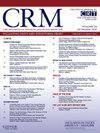The SAPIEN M3 system for transcatheter mitral valve replacement: A new era begins
IF 1.9
Q3 CARDIAC & CARDIOVASCULAR SYSTEMS
引用次数: 0
Abstract
Mitral regurgitation (MR) remains a prevalent and undertreated valvular heart disease, particularly in patients at prohibitive surgical risk. While mitral transcatheter edge-to-edge repair (M-TEER) offers a less invasive alternative, anatomical limitations and incomplete MR reduction in some patients have fueled the development of transcatheter mitral valve replacement (TMVR) technologies. The SAPIEN M3 system (Edwards Lifesciences, Irvine, CA, USA) introduces a novel, fully percutaneous TMVR approach utilizing a two-component system: a self-expanding nitinol dock that encircles the subvalvular apparatus and a balloon-expandable SAPIEN 3 valve adapted for the mitral position. This design minimizes the risk of left ventricular outflow tract (LVOT) obstruction and enables stable, anatomy-independent anchoring without requiring annular calcification. Early feasibility studies have shown high technical success rates (>85 %), effective MR reduction, and a favorable safety profile in high-risk patients. The ongoing ENCIRCLE trial and a planned European post-market study aim to further evaluate the system's safety, durability, and long-term outcomes. Despite promising early results, challenges remain, including procedural complexity, the potential for LVOT obstruction, and limited long-term durability data.
SAPIEN M3经导管二尖瓣置换术:一个新时代的开始。
二尖瓣反流(MR)仍然是一种普遍存在且治疗不足的瓣膜性心脏病,特别是在有手术风险的患者中。虽然二尖瓣经导管边缘到边缘修复(M-TEER)提供了一种侵入性较小的替代方法,但解剖学限制和一些患者的不完全MR复位推动了经导管二尖瓣置换术(TMVR)技术的发展。SAPIEN M3系统(Edwards Lifesciences, Irvine, CA, USA)引入了一种新颖的、完全经皮TMVR入路,采用双组件系统:一个自膨胀镍钛诺支架,环绕瓣下装置,一个球囊膨胀SAPIEN 3瓣膜,适用于二尖瓣位置。这种设计将左心室流出道(LVOT)阻塞的风险降至最低,并实现稳定的、不依赖解剖结构的锚定,而不需要环形钙化。早期的可行性研究表明,高技术成功率(约85%),有效的MR降低,以及对高危患者有利的安全性。目前正在进行的ENCIRCLE试验和计划中的欧洲上市后研究旨在进一步评估该系统的安全性、耐久性和长期结果。尽管早期结果令人鼓舞,但挑战依然存在,包括程序复杂性、LVOT阻塞的可能性以及有限的长期耐久性数据。
本文章由计算机程序翻译,如有差异,请以英文原文为准。
求助全文
约1分钟内获得全文
求助全文
来源期刊

Cardiovascular Revascularization Medicine
CARDIAC & CARDIOVASCULAR SYSTEMS-
CiteScore
3.30
自引率
5.90%
发文量
687
审稿时长
36 days
期刊介绍:
Cardiovascular Revascularization Medicine (CRM) is an international and multidisciplinary journal that publishes original laboratory and clinical investigations related to revascularization therapies in cardiovascular medicine. Cardiovascular Revascularization Medicine publishes articles related to preclinical work and molecular interventions, including angiogenesis, cell therapy, pharmacological interventions, restenosis management, and prevention, including experiments conducted in human subjects, in laboratory animals, and in vitro. Specific areas of interest include percutaneous angioplasty in coronary and peripheral arteries, intervention in structural heart disease, cardiovascular surgery, etc.
 求助内容:
求助内容: 应助结果提醒方式:
应助结果提醒方式:


